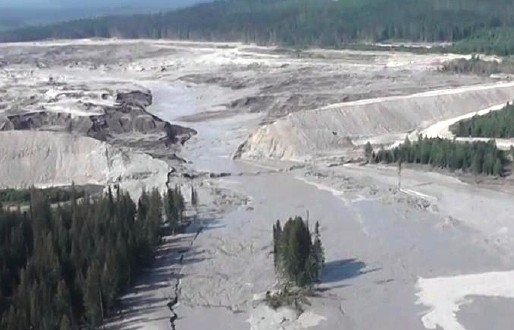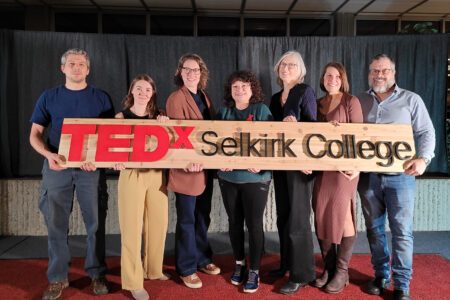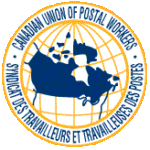One Year Later: Province Still Lagging on Recommendations
Editor’s Note: Lack of safeguards in mine operations cost many Rosslanders their lives back in the day of Rossland’s mining operations. You can read their names and the causes of their deaths at the Museum. Inadequate mine safety now is less about miners’ lives, and more about acid drainage and events like the Mount Polley tailings dam collapse. Should we be concerned about our government’s failure, so far, to require mining companies to use methods recommended to prevent more events like Mount Polley? It may not affect the safety of our Rossland homes or our local water supply, but it will affect us indirectly when the next disaster strikes elsewhere in the province.
Article by David Suzuki:
It was a dramatic image: millions of cubic metres of waste cascading from the Mount Polley mine breach into the Quesnel watershed in B.C.’s Interior. Besides destroying a nine-kilometre creek and endangering salmon and the neighbouring community of Likely, the catastrophe damaged the mining industry’s reputation. In the months following, fingers pointed, independent panels weighed in and committees were struck. One year later, the Mount Polley mine is operating again, this time with a conditional permit and no long-term plan to deal with excess tailings.
In British Columbia, after metals are extracted from large mines, the finely ground rock that remains is stored under water behind earth-and-rock dams, which can prevent acid mine drainage. (Acid mine drainage occurs when water flows through exposed acidic minerals and becomes contaminated.) But storing massive quantities of water in large open pits near towns and waterways is risky.
First Nations, scientists and the independent review panel investigating the breach point to dry stacking as a safer, proven alternative to century-old wet tailings technology. The review panel encouraged this costlier method, yet all 10 B.C. mine proposals either approved or waiting for approval are planning to use wet tailings.
Seabridge Gold’s $5.4-billion KSM copper-gold proposal, already approved by the B.C. and federal governments, includes a 239-metre-high earth dam, which would be among the world’s highest, to store 27 times more tailings than were stored at Mount Polley. The company rejected dry stacking, citing costs and concluding it wasn’t feasible in the wet, mountainous region. The Blackwater gold and silver mine southwest of Prince George, which plans to store four times as many tailings as were stored at Mount Polley, also rejected the safer alternative.
Elsewhere, dry stacking is being used or considered for larger mines. The Greens Creek mine in Alaska was among the first in the world to use it. La Coipa gold-silver mine in Chile, about one-third the size of the proposed Blackwater project, and Hudbay Minerals’ proposed Rosemont Copper mine in Arizona also plan to use dry stacking.
B.C.’s mining industry is growing faster than ever, raising concerns about pollution, community impacts and damage to fish and habitat. Fishermen point to threats to their livelihoods.
B.C.’s auditor general has questioned whether the government is effectively considering the cumulative impacts of decision-making on natural resource development, including mining. First Nations are challenging industrial activity in their territories in light of the Supreme Court’s Tsilhqot’in decision affirming rights to land and resources.
The risk of more mining accidents — and more environmental damage — is real. The B.C. First Nations Energy and Mining Council found mining operations threaten more than 230 northern aboriginal and non-aboriginal communities, including drinking water in Prince George, Terrace and Smithers. The report, Uncertainty Upstream: Potential Threats from Tailings Facility Failures in Northern British Columbia, found 35 tailings ponds at 26 mines in 48 watersheds could affect fish-bearing waters.
B.C.’s government has taken action in the Mount Polley aftermath, but it’s too early to tell if it will be enough. A provincial mining code review is considering ways to implement recommendations from an independent expert engineering panel, which include using dry stack technology where appropriate and improving safety and regulation at tailings-storage facilities. But it doesn’t address the review panel’s conclusion that reducing dam failures requires reducing the number of dams.
Canada’s mining industry and government regulators must do a better job of managing risk. At the very least we need stronger environmental assessments, a requirement that adequate financial bonds be posted before mines are approved and recognition of First Nations’ rights and title.
British Columbia could learn from Quebec. It requires almost all new mines to undergo a rigorous environmental-impact assessment overseen by an independent review panel. Financial assurances have been increased and at least half must be put up before a mine opens. Municipalities will soon have a say in designating “no-go zones” for mining in sensitive areas.
We’ll likely get more answers on the Mount Polley breach following investigations by the chief inspector of mines and Conservation Officer Service. But with timelines reduced and environmental-assessment processes streamlined to fast-track mine approvals, we can expect more events like the one at Mount Polley. We need to take steps now to reduce risks from mining operations.
Written with contributions from David Suzuki Foundation Communications Specialist Theresa Beer.
Learn more at www.davidsuzuki.org.


























